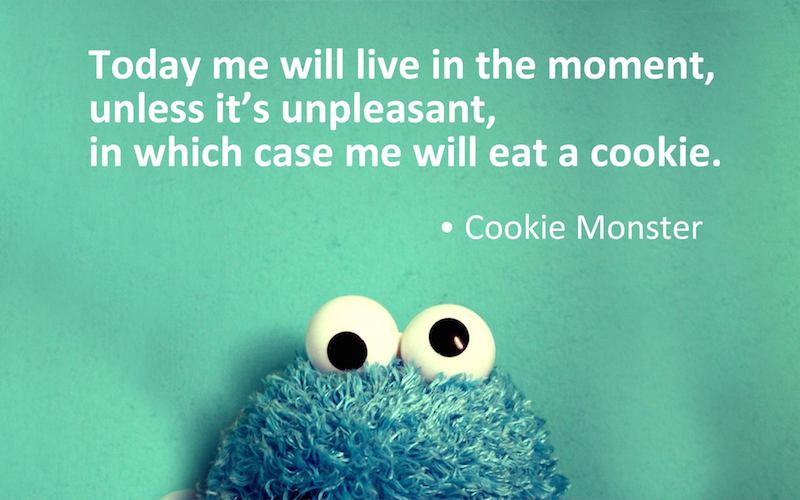Be In The Present
My spouse does long-form improv- similar to what you see on Whose Line Is It Anyway?, only a given scene lasts several minutes instead of a few seconds. It requires tons of practice to keep such a long scene engaging and funny off the top of one’s head.
Sometimes, an improv scene peters out when characters get stuck talking about stuff they already did, or plan to do in the future. During rehearsal, coaches will yell “CUT TO THAT!” In other words, quit talking about it and SHOW us that stuff.
I can’t count all the times I’ve heard writers (and their supporting characters) go on and on about badass protagonists and their badass feats- that all happened before the story begins. If that stuff was so cool and integral to shaping the character, why aren’t you writing that story? It’s way more engaging to watch the struggle of an ordinary person turning into a badass than to start with a badass who one-hit-kills everything in sight, and thus is never in much danger. Imagine if Luke Skywalker just droned on and on about that time he fought Darth Vader. Is that the movie you’d want to see? Of course not. CUT TO THAT, Luke!
When constructing scenes, think hard about what the present moment has to offer. What’s at stake? What do the characters feel? What are their goals, how do they intend to accomplish them, and what gets in their way? What opportunities exist to establish tension? If you can’t come up with good answers, then do you need this scene at all?
Be mindful of the present with dialogue as well. Don’t let character conversation meander into recollections or speculation that isn’t pertinent right now. I have to keep reminding myself of this thanks to many years of Star Trek RPGs. From TNG onward, Star Trek was chock full of briefing scenes where characters discussed the Problem of the Episode and how they wanted to approach it. These scenes made a lot of sense to emulate in role-playing settings. The players could interact with each other, form plans for dealing with the crisis, and develop their characters at the same time.
To the players, the briefings were interesting and useful. To outside observers, though… they’re boring. Imagine sitting in on a project status meeting at a company you don’t work for. The meeting participants are getting a lot out of their collaboration (hopefully), but you couldn’t care less about this shit. You don’t have a reason to care- and that’s the big problem. Briefing scenes are usually dumped at the beginning, before your audience knows any of the characters or cares about the stakes. Even if they do show up later in the narrative, how necessary are they? What’s more exciting- seeing the characters scramble to disable the warp core as klaxons blare and time grows short- or seeing them sitting on their asses in a tranquil conference room, debating the feasibility of rerouting the engine room plasma conduits?
It’s not always bad to have characters reminiscing or talking about the future. You can do so as a means of establishing character or explaining what comes next- but keep in mind that it gets dull fast. It also throws the brakes on advancing your plot.
Look for ways to make the present moment engaging in some way. If you can’t, choose a better present and go from there.
What tips do you have for living in the moment? Drop me a line in the comments!
